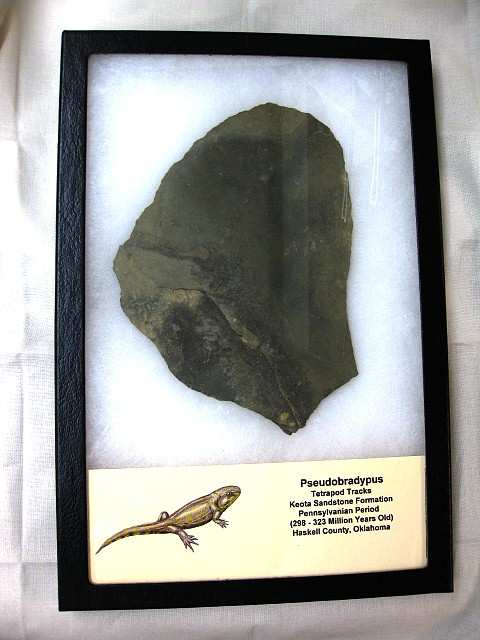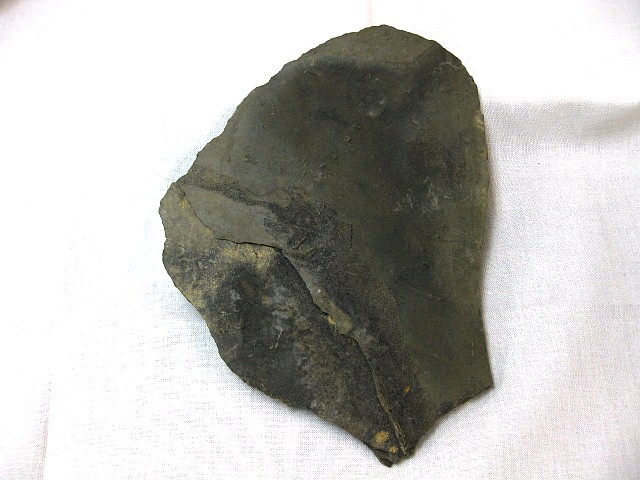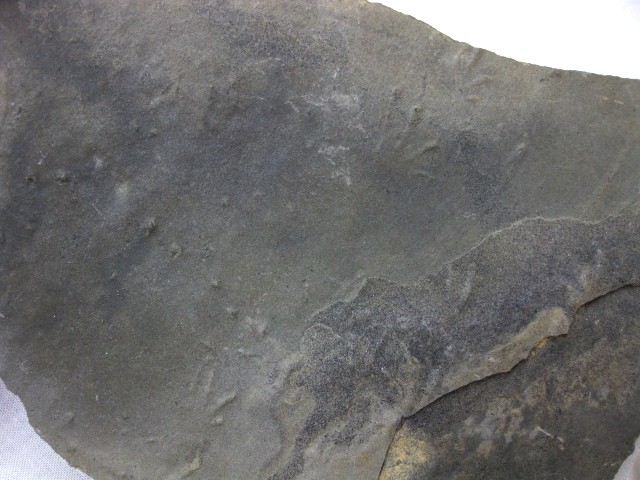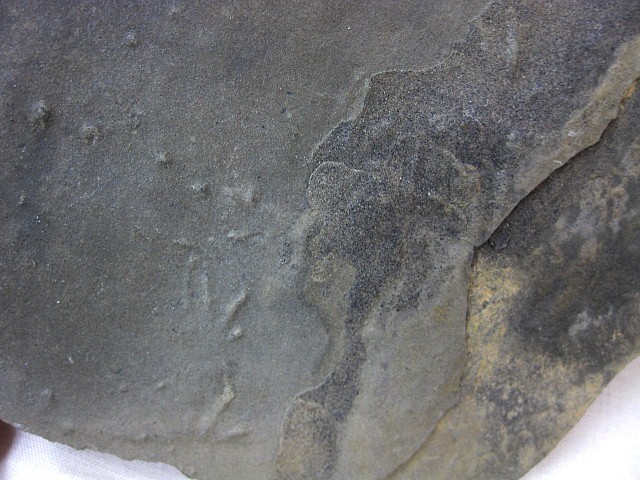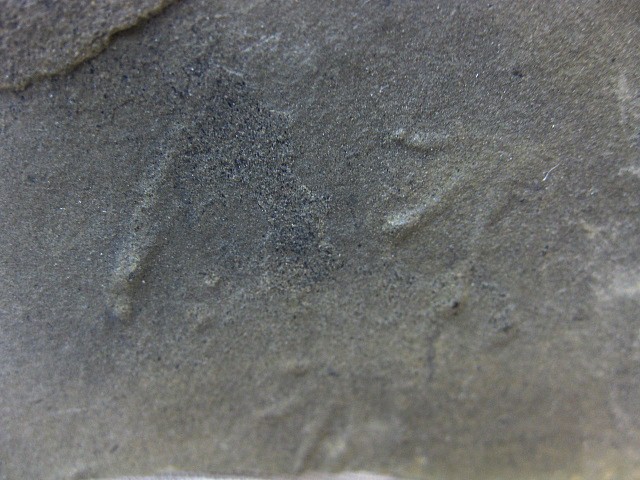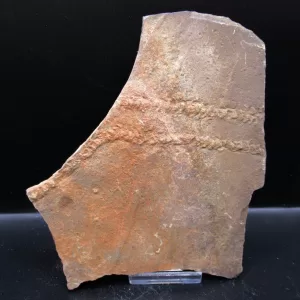Description
- Pseudobradypus Tetrapos Trackway
- Pennsylvanian Age
- Keota Sandstone Formation
- Haskell County, Oklahoma
- Specimen measures approx. 5″ x 7″ and will come in the 8″ X 12″ Riker Mount with Label as Shown
The superclass Tetrapoda (from Greek: τετρα- “four” and πούς “foot”) contains the four-limbed vertebrates known as tetrapods it includes living and extinct amphibians, reptiles (including dinosaurs, and its subgroup birds) and mammals (including primates, and all hominid subgroups including humans), as well as earlier extinct groups. Tetrapods evolved from a group of animals known as the Tetrapodomorpha, who in turn evolved from ancient Sarcopterygii lobe-finned fishes around 390 million years ago in the middle Devonian period; their forms were transitional between lobe-finned fishes and the four-limbed tetrapods.
The first tetrapods appeared by the late Devonian, 367.5 million years ago; the specific aquatic ancestors of the tetrapods, and the process by which they colonized the earth’s land after emerging from water, remain unclear, and are areas of active research and debate among palaeontologists at present.
The first tetrapods were primarily aquatic. Modern amphibians, which evolved from earlier groups, are generally semiaquatic; they live the first stage of their lives as fish-like tadpoles, with later stages of life being partly terrestrial and partly aquatic. However, most tetrapod species today are amniotes, in their majority being terrestrial tetrapods whose branch evolved about 340 million years ago (crown amniotes evolved 318 million years ago) from earlier tetrapods; the key innovation of the amniotes over the amphibians is that amniotes can lay their eggs on land rather than in bodies of water (ponds, lakes, rivers, seas, oceans, etc.), or they have further evolved to retain the fertilized egg/s within the mother.

